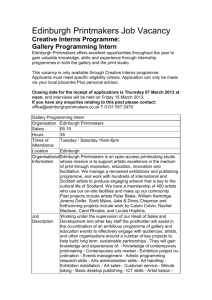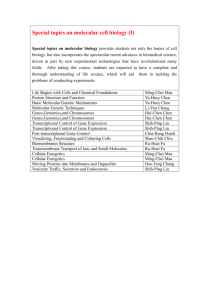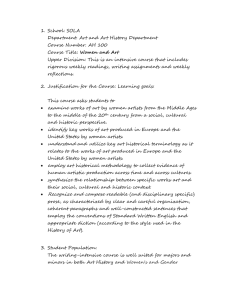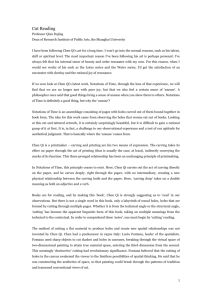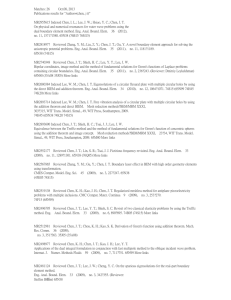Objects of Thought: Reading Chen Qi
advertisement
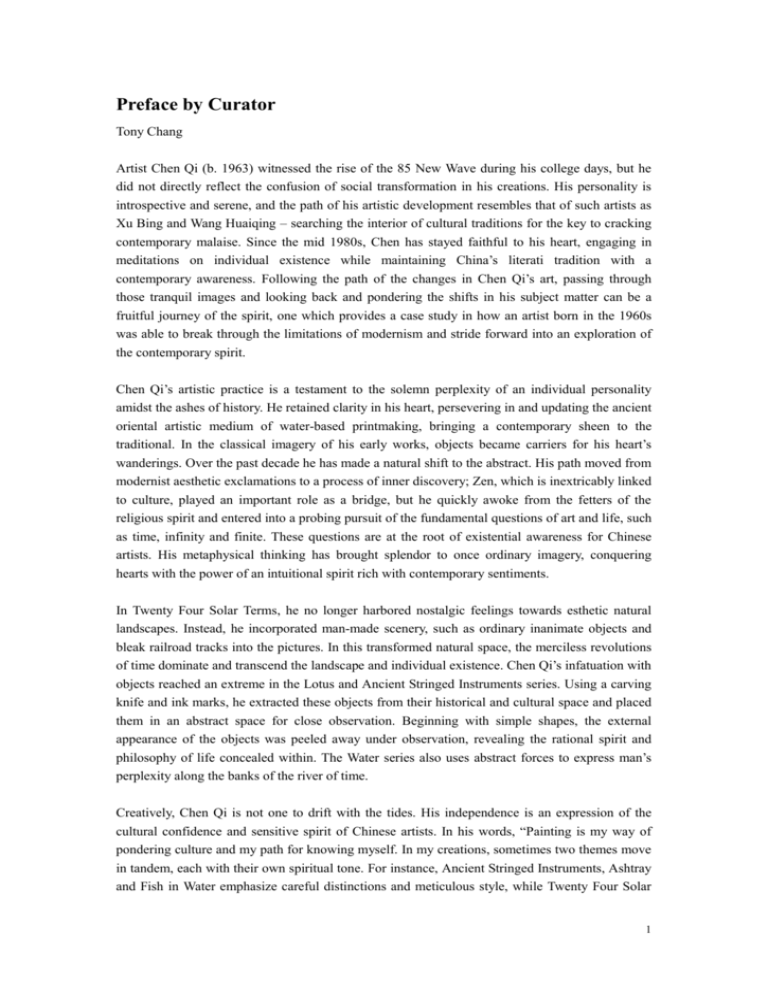
Preface by Curator Tony Chang Artist Chen Qi (b. 1963) witnessed the rise of the 85 New Wave during his college days, but he did not directly reflect the confusion of social transformation in his creations. His personality is introspective and serene, and the path of his artistic development resembles that of such artists as Xu Bing and Wang Huaiqing – searching the interior of cultural traditions for the key to cracking contemporary malaise. Since the mid 1980s, Chen has stayed faithful to his heart, engaging in meditations on individual existence while maintaining China’s literati tradition with a contemporary awareness. Following the path of the changes in Chen Qi’s art, passing through those tranquil images and looking back and pondering the shifts in his subject matter can be a fruitful journey of the spirit, one which provides a case study in how an artist born in the 1960s was able to break through the limitations of modernism and stride forward into an exploration of the contemporary spirit. Chen Qi’s artistic practice is a testament to the solemn perplexity of an individual personality amidst the ashes of history. He retained clarity in his heart, persevering in and updating the ancient oriental artistic medium of water-based printmaking, bringing a contemporary sheen to the traditional. In the classical imagery of his early works, objects became carriers for his heart’s wanderings. Over the past decade he has made a natural shift to the abstract. His path moved from modernist aesthetic exclamations to a process of inner discovery; Zen, which is inextricably linked to culture, played an important role as a bridge, but he quickly awoke from the fetters of the religious spirit and entered into a probing pursuit of the fundamental questions of art and life, such as time, infinity and finite. These questions are at the root of existential awareness for Chinese artists. His metaphysical thinking has brought splendor to once ordinary imagery, conquering hearts with the power of an intuitional spirit rich with contemporary sentiments. In Twenty Four Solar Terms, he no longer harbored nostalgic feelings towards esthetic natural landscapes. Instead, he incorporated man-made scenery, such as ordinary inanimate objects and bleak railroad tracks into the pictures. In this transformed natural space, the merciless revolutions of time dominate and transcend the landscape and individual existence. Chen Qi’s infatuation with objects reached an extreme in the Lotus and Ancient Stringed Instruments series. Using a carving knife and ink marks, he extracted these objects from their historical and cultural space and placed them in an abstract space for close observation. Beginning with simple shapes, the external appearance of the objects was peeled away under observation, revealing the rational spirit and philosophy of life concealed within. The Water series also uses abstract forces to express man’s perplexity along the banks of the river of time. Creatively, Chen Qi is not one to drift with the tides. His independence is an expression of the cultural confidence and sensitive spirit of Chinese artists. In his words, “Painting is my way of pondering culture and my path for knowing myself. In my creations, sometimes two themes move in tandem, each with their own spiritual tone. For instance, Ancient Stringed Instruments, Ashtray and Fish in Water emphasize careful distinctions and meticulous style, while Twenty Four Solar 1 Terms is full of perceptivity and emotional expression. It was about hearing the sounds of change in the world by listening to the passage of the seasons. Butterfly and Faramita are full of cultural symbolism.” What remains unchanged in his works are the tranquil atmosphere and the distant, faint emotions, an embodiment of oriental artists’ unique perceptive methods, which expresses a profound mind, a deep understanding of beauty, clear vision and rich emotions through silent observation and cautious action. The art of water-based printmaking is a continuation of the infatuation with the traces of objects from Chinese ink and wash painting, and rubbings of ancient stele inscriptions. Through more than two decades of perseverance, Chen Qi has enriched the expressive power of water-based printmaking language by expanding the medium into the unknown realms of the conceptual, and pushing his works beyond the limitations of painting. For Chen Qi, water printmaking is the act of a witness of civilization and history revisiting the past and consoling the present, as well as a ritual of the artist’s spirit soaring into the unknown realm of the soul. For his recent work, the Notations of Time series, his path of artistic transformation has extended even further, entering into the depths of the inner world. 2

